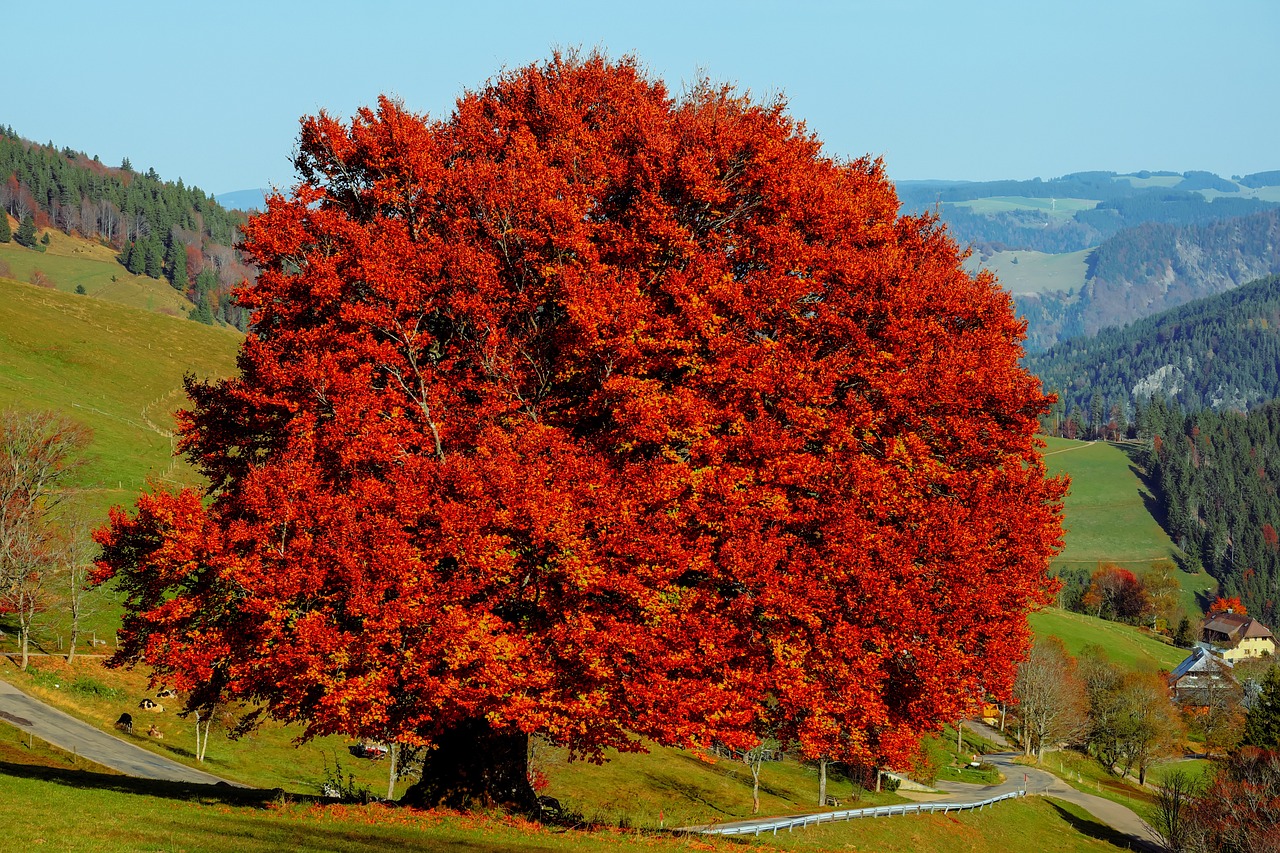Beech wood
Contents |
[edit] Introduction
The Common Beech (fagus sylvatica) is only considered a native tree to southern England and Wales. It grows in woods or as single trees, usually on drier, free-draining soil such as chalk downs or acidic soils, seeking water.
Beech woodland is shady with dense fallen leaves and mast husks preventing most plants from growing. The beech carries a shade wider than most, except holly (ilex spp) or yew (taxus spp) but can grow under other trees. Only shade-tolerant plants can survive beneath a beech canopy, Its smooth, silvery trunk can be beautiful.
The tallest recorded beech tree in England is 150ft and beech can reach 20 feet around at their stem. the average life span is around 250 years, with the oldest said to be over 320 years old. It can host a large number of wood decay fungi, pests and diseases meaning mature trees can die quite quickly if infected.
It is seen as a feminine tree, the queen, where oak is king. In Celtic mythology, Fagus was the god of beech trees, thought to have medicinal properties leaves were boiled to help relieve swelling. Forked beech twigs are also traditionally used for divining.
[edit] Wildlife
It is monoecious, which means both male and female flowers grow on the same tree, tassel-like male catkins hang from long stalks at the end of twigs, while female flowers grow in pairs, surrounded by a cup. Once wind pollinated the cup, contains one or two beech nuts (known as beechmast).
Beech woodland is an important habitat for butterflies, and food for the caterpillars. Seeds are eaten by mice, voles, squirrels and birds. Native truffle fungi also grow beneath these trees which help obtain nutrients in exchange for sugars from the tree (ectomycorrhizal)
[edit] Uses
Beech trees can be pollarded or coppiced, the wood traditionally being used to manufacture furniture as well as flooring, veneers, boatbuilding, cabinets, plywoods, piano parts and other musical instruments. It is a hard and strong wood but cannot withstand moisture, so it is not durable externally and is mostly used for interiors. In the UK, traditionally the bodgers of the Chilterns pollarded greenwood beech, using the craft of wood turning on site to form slim furniture legs which were then sold to the local furniture manufacturers in the area.
[edit] Specification
- Common Name(s): European beech, common beech
- Scientific Name: Fagus sylvatica
- Distribution: Europe
- Tree Size: 100-130 ft (30-40 m) tall, 3-5 ft (1-1.5 m) trunk diameter
- Average Dried Weight: 44.3 lbs/ft3 (710 kg/m3)
- Specific Gravity (Basic, 12% MC): 0.53, 0.71
- Janka Hardness: 1,450 lbf (6,460 N)
- Modulus of Rupture: 15,970 lbf/in2 (110.1 MPa)
- Elastic Modulus: 2,075,000 lbf/in2 (14.31 GPa)
[edit] Related articles on Designing Buildings
- A guide to the use of urban timber FB 50.
- Birch wood.
- Carpentry.
- Cedar.
- Forest Stewardship Council.
- Hardwood.
- Lime wood.
- Programme for the Endorsement of Forest Certification
- Softwood.
- Timber vs wood.
- Types of timber.
[edit] External Links
Featured articles and news
Key points for construction at a glance with industry reactions.
Functionality, visibility and sustainability
The simpler approach to specification.
Architects, architecture, buildings, and inspiration in film
The close ties between makers and the movies, with our long list of suggested viewing.
SELECT three-point plan for action issued to MSPs
Call for Scottish regulation, green skills and recognition of electrotechnical industry as part of a manifesto for Scottish Parliamentary elections.
UCEM becomes the University of the Built Environment
Major milestone in its 106-year history, follows recent merger with London School of Architecture (LSE).
Professional practical experience for Architects in training
The long process to transform the nature of education and professional practical experience in the Architecture profession following recent reports.
A people-first approach to retrofit
Moving away from the destructive paradigm of fabric-first.
International Electrician Day, 10 June 2025
Celebrating the role of electrical engineers from André-Marie Amperè, today and for the future.
New guide for clients launched at Houses of Parliament
'There has never been a more important time for clients to step up and ...ask the right questions'
The impact of recycled slate tiles
Innovation across the decades.
EPC changes for existing buildings
Changes and their context as the new RdSAP methodology comes into use from 15 June.
Skills England publishes Sector skills needs assessments
Priority areas relating to the built environment highlighted and described in brief.
BSRIA HVAC Market Watch - May 2025 Edition
Heat Pump Market Outlook: Policy, Performance & Refrigerant Trends for 2025–2028.
Committing to EDI in construction with CIOB
Built Environment professional bodies deepen commitment to EDI with two new signatories: CIAT and CICES.
Government Grenfell progress report at a glance
Line by line recomendation overview, with links to more details.
An engaging and lively review of his professional life.
Sustainable heating for listed buildings
A problem that needs to be approached intelligently.
50th Golden anniversary ECA Edmundson apprentice award
Deadline for entries has been extended to Friday 27 June, so don't miss out!
CIAT at the London Festival of Architecture
Designing for Everyone: Breaking Barriers in Inclusive Architecture.
Mixed reactions to apprenticeship and skills reform 2025
A 'welcome shift' for some and a 'backwards step' for others.



























